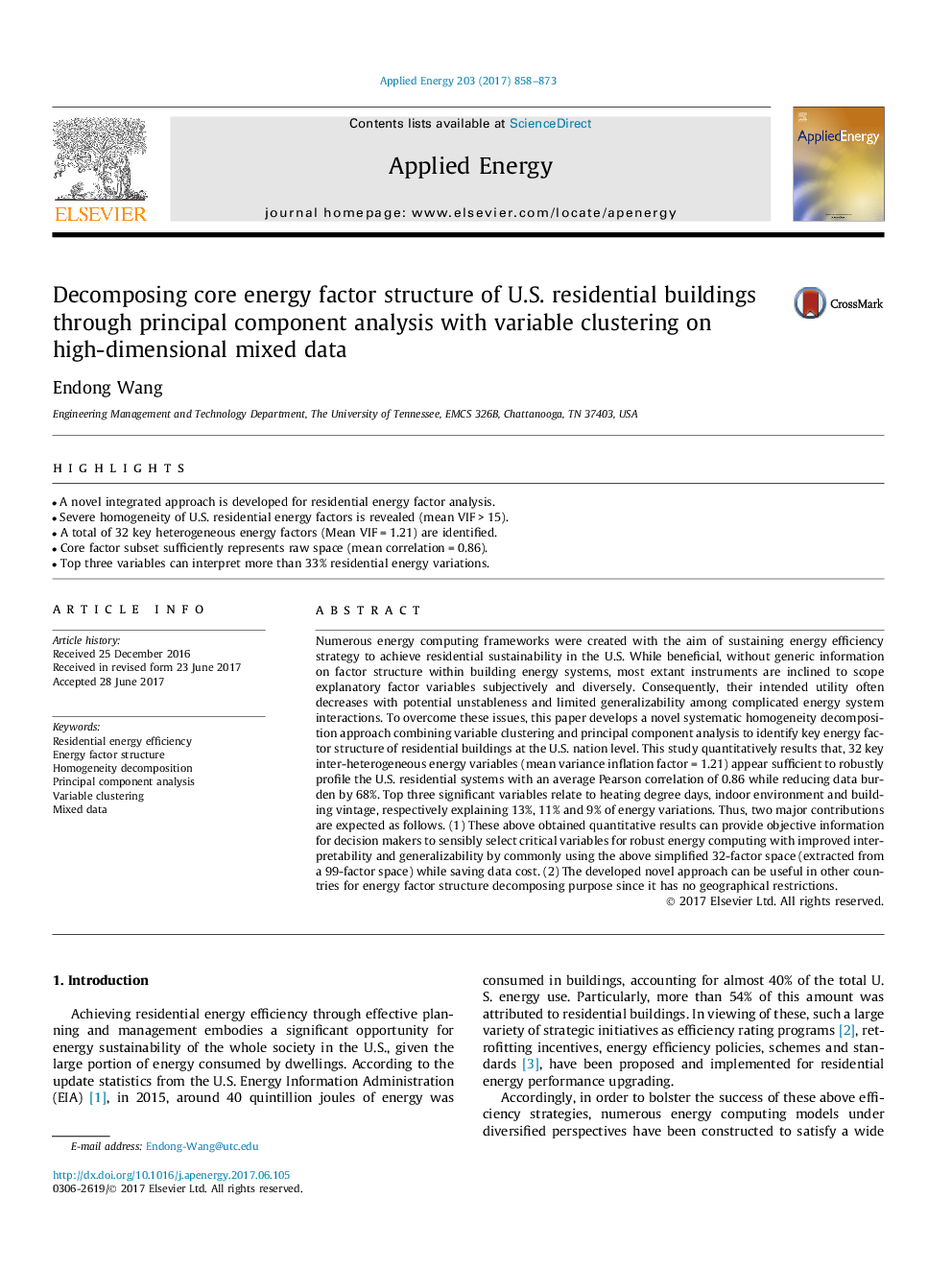| کد مقاله | کد نشریه | سال انتشار | مقاله انگلیسی | نسخه تمام متن |
|---|---|---|---|---|
| 4915812 | 1428087 | 2017 | 16 صفحه PDF | دانلود رایگان |
عنوان انگلیسی مقاله ISI
Decomposing core energy factor structure of U.S. residential buildings through principal component analysis with variable clustering on high-dimensional mixed data
ترجمه فارسی عنوان
تجزیه ساختار فاکتور انرژی هسته ای ساختمان های مسکونی در ایالات متحده از طریق تجزیه و تحلیل مولفه های اصلی با خوشه بندی متغیر در داده های مخلوط با ابعاد بزرگ
دانلود مقاله + سفارش ترجمه
دانلود مقاله ISI انگلیسی
رایگان برای ایرانیان
کلمات کلیدی
بهره وری انرژی مسکونی، ساختار فاکتور انرژی تجزیه همگنی، تجزیه و تحلیل مولفه اصلی، خوشه متغیر داده های مختلط،
موضوعات مرتبط
مهندسی و علوم پایه
مهندسی انرژی
مهندسی انرژی و فناوری های برق
چکیده انگلیسی
Numerous energy computing frameworks were created with the aim of sustaining energy efficiency strategy to achieve residential sustainability in the U.S. While beneficial, without generic information on factor structure within building energy systems, most extant instruments are inclined to scope explanatory factor variables subjectively and diversely. Consequently, their intended utility often decreases with potential unstableness and limited generalizability among complicated energy system interactions. To overcome these issues, this paper develops a novel systematic homogeneity decomposition approach combining variable clustering and principal component analysis to identify key energy factor structure of residential buildings at the U.S. nation level. This study quantitatively results that, 32 key inter-heterogeneous energy variables (mean variance inflation factor = 1.21) appear sufficient to robustly profile the U.S. residential systems with an average Pearson correlation of 0.86 while reducing data burden by 68%. Top three significant variables relate to heating degree days, indoor environment and building vintage, respectively explaining 13%, 11% and 9% of energy variations. Thus, two major contributions are expected as follows. (1) These above obtained quantitative results can provide objective information for decision makers to sensibly select critical variables for robust energy computing with improved interpretability and generalizability by commonly using the above simplified 32-factor space (extracted from a 99-factor space) while saving data cost. (2) The developed novel approach can be useful in other countries for energy factor structure decomposing purpose since it has no geographical restrictions.
ناشر
Database: Elsevier - ScienceDirect (ساینس دایرکت)
Journal: Applied Energy - Volume 203, 1 October 2017, Pages 858-873
Journal: Applied Energy - Volume 203, 1 October 2017, Pages 858-873
نویسندگان
Endong Wang,
